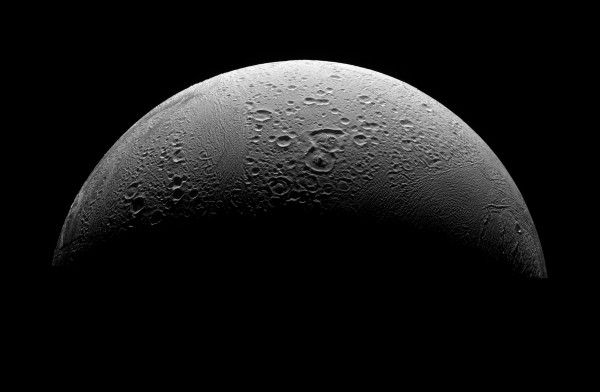NASA: Moon to Have its Own Moon to Stop Killer Asteroids and Prepare for Mars Colony
| Ana Verayo | | Mar 26, 2015 09:32 AM EDT |
(Photo : Reuters) It will have its own Moon soon.
NASA is planning to place a space rock into orbit around the Moon by launching a robotic spacecraft to reel in that 10 feet diameter space rock from an asteroid.
This mission is only one of two under consideration to develop new technologies and equipment for future manned Mars missions. The second option involves capturing a small asteroid using a bag like mechanism and transporting the body into lunar orbit.
Like Us on Facebook
Whichever the space agency chooses, NASA's goal is to send an Orion spacecraft to transport a two member crew to the captured object orbiting the Moon to test the new capsule for a three week trial in deep space.
NASA will decide which strategy is best for capturing the asteroid a year before the launch of the robotic Asteroid Redirect Mission around December 2020, according to Robert Lightfoot, NASA's associate administrator.
The spacecraft will journey for two years into deep space to search for a potential asteroid target. When the spacecraft reaches that asteroid, it will study and conduct a detailed survey of it for about a year.
Apart from selecting potential space rocks for this relocation, a series of experiments will be conducted to test new techniques to move the asteroid, especially for preventive measures if ever a dangerous asteroid will someday smash into Earth.
When the target space rock has been chosen, the probe will lower and latch itself onto the surface of the asteroid using a pair of robotic arms to grab it. The asteroid will then be reeled in by lunar gravitational forces, a process that can take up to six years.
Scientists predict that by 2025, the Moon will have a new satellite in its orbit that will hopefully pave way for a follow up mission by astronauts during the same year. This process of capturing a space rock will lead to developing new technology for future missions to Mars, specifically landing astronauts and building a colony there.
TagsNASA: Moon to Have its Own Moon to Stop Killer Asteroids and Prepare for Mars Colony, NASA, moon, asteroid, NASA astronauts to Mars, NASA mars mission, NASA moon its own moon asteroid mars
©2015 Chinatopix All rights reserved. Do not reproduce without permission
EDITOR'S PICKS
-

Did the Trump administration just announce plans for a trade war with ‘hostile’ China and Russia?
-

US Senate passes Taiwan travel bill slammed by China
-

As Yan Sihong’s family grieves, here are other Chinese students who went missing abroad. Some have never been found
-

Beijing blasts Western critics who ‘smear China’ with the term sharp power
-

China Envoy Seeks to Defuse Tensions With U.S. as a Trade War Brews
-

Singapore's Deputy PM Provides Bitcoin Vote of Confidence Amid China's Blanket Bans
-

China warns investors over risks in overseas virtual currency trading
-

Chinese government most trustworthy: survey
-

Kashima Antlers On Course For Back-To-Back Titles
MOST POPULAR
LATEST NEWS
Zhou Yongkang: China's Former Security Chief Sentenced to Life in Prison

China's former Chief of the Ministry of Public Security, Zhou Yongkang, has been given a life sentence after he was found guilty of abusing his office, bribery and deliberately ... Full Article
TRENDING STORY

China Pork Prices Expected to Stabilize As The Supplies Recover

Elephone P9000 Smartphone is now on Sale on Amazon India

There's a Big Chance Cliffhangers Won't Still Be Resolved When Grey's Anatomy Season 13 Returns

Supreme Court Ruled on Samsung vs Apple Dispute for Patent Infringement

Microsoft Surface Pro 5 Rumors and Release Date: What is the Latest?










